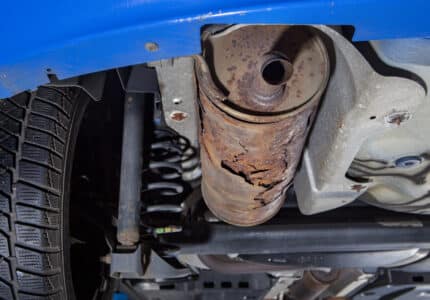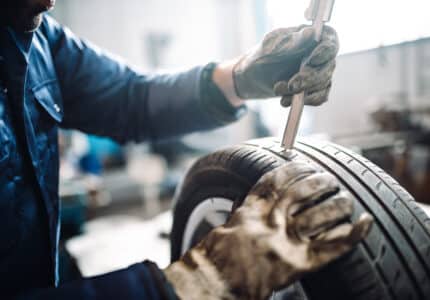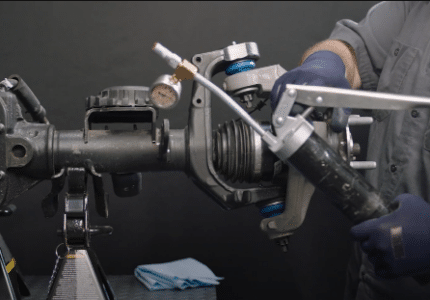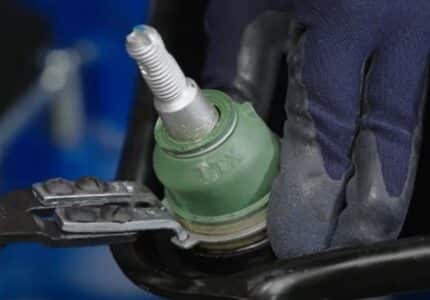DON’T KEEP US IN SUSPENSE: COMMON ISSUES WITH MODIFIED SUSPENSIONS
Whether for work or for play, there are many performance and aesthetic reasons for modifying your vehicle’s suspension. But what about the downsides? Modifications change the vehicle’s entire geometry and can cause premature suspension, steering and driveline component failure if not done properly. Read on to get an in-depth look at:
- How suspension modifications affect vehicle geometry
- What types of modifications are available
- Why modifications are done
- What issues may occur
About the Suspension System
The suspension is responsible for several key functions, including:
- Supporting the weight of the chassis, engine, passengers and cargo

- Maintaining stability and control with all 4 tires on the road
- Absorbing shocks and vibrations from the road
- Ensuring proper handling and steering responsiveness
About Suspension Geometry
 Correct vehicle suspension geometry means that the pivot points, such as ball joints and bushings, are in the proper position. Any change in the pivot points can alter the vehicle’s performance and put added stress on other components in the system.
Correct vehicle suspension geometry means that the pivot points, such as ball joints and bushings, are in the proper position. Any change in the pivot points can alter the vehicle’s performance and put added stress on other components in the system.
 The ride height or “curb height” specification of a vehicle is critical to its suspension geometry and can affect both vehicle performance and component wear. When changing the ride height, special consideration to the adjustment of the suspension must be made.
The ride height or “curb height” specification of a vehicle is critical to its suspension geometry and can affect both vehicle performance and component wear. When changing the ride height, special consideration to the adjustment of the suspension must be made.
Types of Modifications
When making any modifications, having a good understanding of the final goal will help determine the right method and components to accomplish the job.
Lowering the Suspension
Lowering the suspension involves making modifications to reduce the distance between the chassis (body of the vehicle) and the ground. It’s often done to improve handling and make the vehicle look more sporty. Lowering is often done by using:
 Lowering Springs: Designed to replace the factory springs, these come in various lowering rates to achieve different levels of drop. Installation typically requires removing the old springs and installing the new ones.
Lowering Springs: Designed to replace the factory springs, these come in various lowering rates to achieve different levels of drop. Installation typically requires removing the old springs and installing the new ones.
Coilover Systems: Offering more adjustability than lowering springs, these systems enable ride height adjustment and often come with damping adjustments for fine-tuning suspension performance.
 Air Suspension Systems: Using airbags instead of traditional springs, air suspension systems can lower (or raise) the vehicle’s height at the push of a button.
Air Suspension Systems: Using airbags instead of traditional springs, air suspension systems can lower (or raise) the vehicle’s height at the push of a button.
Lifting the Suspension
Increasing the distance between the chassis and the ground, lifted suspensions are done to achieve various goals, such as improving off-road performance, increasing ground clearance, accommodating larger tires or creating a more rugged appearance. Lifting is often done by using:
 Coil Spring Spacers: These spacers are placed on top of or below the existing coil springs to lift the vehicle. They come in different thicknesses to achieve the desired lift height, and they are often used in conjunction with other suspension modifications.
Coil Spring Spacers: These spacers are placed on top of or below the existing coil springs to lift the vehicle. They come in different thicknesses to achieve the desired lift height, and they are often used in conjunction with other suspension modifications.
Strut Spacers: Similar to coil spring spacers, these are designed for vehicles with strut-type suspensions. They are installed between the strut assembly and the vehicle’s body or frame to lift the front or rear of the vehicle.
Air Suspension Systems: As noted above, these employ airbags, and they can be used to raise or lower the vehicle on demand.
 Complete Lift Kits: Lift kits typically include taller springs, longer shocks and other hardware designed to lift the vehicle. They are available in various sizes, from mild leveling kits to extreme lifts for off-roading.
Complete Lift Kits: Lift kits typically include taller springs, longer shocks and other hardware designed to lift the vehicle. They are available in various sizes, from mild leveling kits to extreme lifts for off-roading.
Suspension Modification Issues
Aesthetics Vs. Functionality
Sometimes the aesthetics of modification can start to impair the functionality of the vehicle.
Setting a suspension too low may cause ground clearance issues that may render the vehicle undrivable on regular roads. Conversely, lifting the vehicle too high can cause instability in the system as well as a high potential for roll-overs.
 Changes to Suspension Geometry: Changing the height of the suspension may dramatically change its geometry and lead to accelerated component wear. It could also lead to drivability issues and excessive tire wear.
Changes to Suspension Geometry: Changing the height of the suspension may dramatically change its geometry and lead to accelerated component wear. It could also lead to drivability issues and excessive tire wear.
Alignment Problems: Suspension modifications can alter wheel alignment, including camber, caster, and toe angles. Improper alignment can lead to uneven tire wear, decreased handling performance and steering issues.
Tire And Wheel Compatibility Issues: Suspension modifications may allow for larger tires or wheels, but it’s essential to ensure that they fit properly without rubbing against the body or suspension components. Oversized tires can also affect gearing, performance and the vehicle’s speedometer output.
Tuning And Fine-Tuning: Achieving the desired suspension performance often requires fine-tuning and adjustments. This may involve multiple rounds of testing and adjustment to optimize handling, ride quality and alignment.
Cost: Suspension modifications can be costly and include the price of the components, installation labor, wheel alignment and any additional modifications required. Plus, the added stresses imposed on steering and suspension components will contribute to on going maintenance costs associated with replacing prematurely worn components.
Warranty Concerns: Most suspension modifications will void the manufacturer’s warranty. It’s important to check with the OEM or dealership to understand how modifications may impact the vehicle’s warranty coverage.

Insurance Issues: Modifying the suspension can affect insurance coverage and premiums. For instance, extreme lifts that significantly alter a vehicle’s handling characteristics might be considered uninsurable by some providers. It’s critical to gain an understanding of any impacts modifications may have on insurance.
 Legal and Regulatory Compliance: Many jurisdictions have regulations governing suspension modifications, including maximum allowable lift or drop heights. It’s essential to be aware of and comply with local laws to avoid legal issues.
Legal and Regulatory Compliance: Many jurisdictions have regulations governing suspension modifications, including maximum allowable lift or drop heights. It’s essential to be aware of and comply with local laws to avoid legal issues.
Summary
Modifications can give you the look and performance you want in a vehicle. But changing your vehicle’s geometry will change the loading in the entire steering and suspension systems (ball joints, control arms, stabilizer bars and links, springs and shocks), which may result in accelerated part failure, as well as creating other complications. For more information from the pros who know, watch the webinar, Don’t Keep Us In Suspense: Common Issues with Modified Suspensions.




